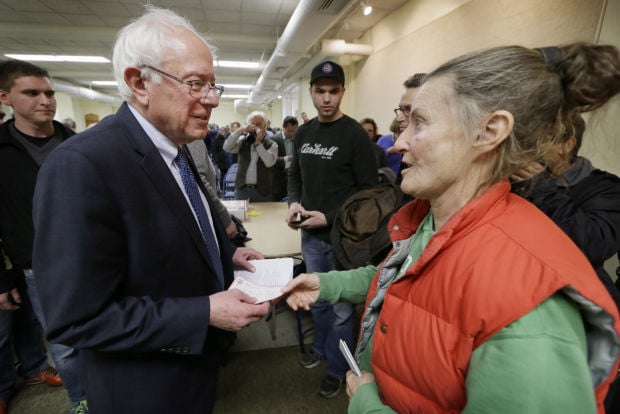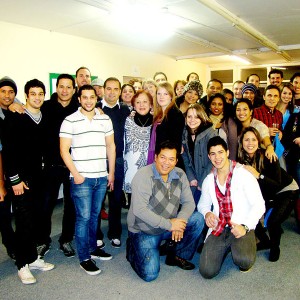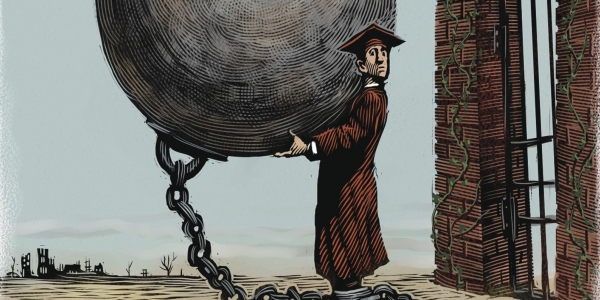
On the Need to Think Long and Hard about the Upcoming G8/NATO Events in Chicago
February 28, 2012
Greetings. I write from Niles, Ohio, near Youngstown. I take part in Occupy Youngstown (OY). I was asked to make some “keynote” remarks on the occasion of OY’s first public meeting on October 15, 2011. I am a member of the legal team that filed suit after our tent and burn barrel were confiscated on November 10-11. I am helping to create the OY Free University where working groups explore a variety of future projects.
I do not write to comment on recent events in Oakland. Our younger daughter lived for a few years in a co-operative house situated on the border between Berkeley and Oakland. For part of that time Martha worked at a public school in Oakland where most of the children were Hispanic. A can company wanted to take the school’s recreation yard. In protest, parents courageously kept their children out of school, causing the school’s public funding to drop precipitously. As I understand it, in the end the parents prevailed and got a new rec yard.
That was many years ago. It sticks in my mind as an example of the sort of activity, reaching out to the communities in which we live, that I hope Occupiers are undertaking all over the country.
I
Every local Occupy movement of which I am aware has begun to explore the terrain beyond the downtown public square, asking, what is to be done next?
This is as it should be and we need to be gentle with ourselves and one another, recognizing the special difficulties of this task. The European middle class, before taking state power from feudal governments, built a network of new institutions within the shell of the old society: free cities, guilds, Protestant congregations, banks and corporations, and finally, parliaments. It appears to be much more difficult to construct such prefigurative enclaves within capitalism, a more tightly-knit social fabric.
I sense that, because of this difficulty in building long-term institutions, in much of the Occupy universe there is now an emphasis on protests, marches, “days” for this or that, symbolic but temporary occupations, and other tactics of the moment, rather than on a strategy of building ongoing new institutions and dual power.
I have a particular concern about the impending confrontation in Chicago in May between the forces of Occupy and capitalist globalization. My fears are rooted in a history that may seem to many of you irrelevant. If so, stroke my fevered brow and assure me that you have no intention of letting Occupy crash and burn in the way that both the Student Nonviolent Coordinating Committee (SNCC) and Students for a Democratic Society (SDS) did at the end of the Sixties.
II
Here, in brief, is the history that I pray we will not repeat.
In August 1964, rank-and-file African Americans in the Mississippi Freedom Democratic Party (MFDP), staff of SNCC, and many summer volunteers, traveled to the convention of the national Democratic Party in Atlantic City to demand that the inter-racial delegates of the MFDP should be seated in place of the all-white delegates from the “regular,” segregationist Mississippi Democrats. It was an apocalyptic moment, made especially riveting by the televised testimony of Fannie Lou Hamer.
But politically speaking, many who made the trip from the Deep South never found their way back there. A variety of causes were at work but one was that it seemed tedious to return from the mountaintop experience up North to the apparently more humdrum day-to-day movement work in Mississippi. The so-called Congressional Challenge that followed the traumatic events in Atlantic City caused many activists to continue to spend time away from local communities in which they had been living and working.
Bear with me if I continue this ancient Movement history.
In November 1965, there was a gathering in Washington DC of representatives from a myriad of ad hoc student groups formed to oppose the Vietnam war. During the weeks before this occasion several friends warned me that different Left groups were preparing to do battle for control of the new antiwar movement. I assured them that their fears were needless: that kind of thing might have happened in the 1930s, but we were a new Left, committed to listening to one another and to learning from our collective experience.
I was wrong. From the opening gavel, both Communists and Trotskyists sought to take control of the new activist network. In the process they seriously disillusioned many young persons who, perhaps involved in their first political protest, had come long distances in the hope of creating a common front against the war.
Paul Booth of SDS called this meeting “the crazy convention.” I remember sleeping on the floor of somebody’s apartment next to Dave Dellinger as the two of us sought to refocus attention on what was happening in Vietnam. I recall pleading near the end of the occasion with members of the Young Socialist Alliance (YSA) to be allowed into a locked hotel room where, apparently having lost on the convention floor, they were forming a new national organization.
SDS faced the identical problem at the end of the 1960s with the Progressive Labor party (PL). Essentially what PL did was to caucus beforehand, to adopt tactics for promoting its line within a larger and more diffuse organization, and then, without any interest in what others might have to say, ramming through its predecided resolutions. After a season of hateful harangues and organizational division, very little remained.
Some Occupiers may respond, “But we’re not trying to take over anything! We only want to be able to follow our own consciences!” Sadly, though, the impact of Marxist-Leninist vanguardism and unrestrained individualism on a larger body of variegated protesters may be pretty much the same. In each case there may be a fixed belief that one knows the Truth and has correctly determined What Is To Be Done, which makes it an unnecessary waste of time to Listen To The Experience Of Others. Those who hold these attitudes are likely to act in a way that will wound or even destroy the larger Movement that gives them a platform.
In the period between Seattle in 1999 and September 11, 2001, many activists were into a pattern of behavior that might unkindly be described as summit-hopping. Two young men from Chicago who had been in Seattle stayed in our basement for a night on their way to the next encounter with globalization in Quebec. I was struck by the fact that, as they explained themselves, when they came back to Chicago from Seattle they had been somewhat at a loss about what to do next. As each successive summit (Quebec, Genoa, Cancun) presented itself, they expected to be off to confront the Powers That Be in a new location, leaving in suspended state whatever beginnings they were nurturing in their local communities. So far as an outsider like myself could discern, there did not seem to be a long-term strategy directed toward creating an “otro mundo,” a qualitatively new society.
This brings me to the forthcoming confrontation in Chicago in May. My wife Alice and I were living in Chicago in 1968. I was arrested and briefly jailed. Although many in the Movement considered the Chicago events to be a great victory, I believe it is the consensus of historians that the national perception of what happened in Chicago contributed to Nixon’s victory in the November 1968 election. More important, as some of us foresaw these predominantly Northern activists like their SNCC predecessors appeared to have great difficulty in picking up again the slow work of “accompanying” in local communities.
I dread the possibility of a re-run of this sequence of events in 2012.
III
It may seem to some readers that “Staughton is once again pushing his nonviolence rap.” However, although I am concerned that small groups in the Occupy Movement may contribute to unnecessary violence in Chicago, it is not violence as such that most worries me.
While I have all my life been personally committed to nonviolence, I have never attempted to impose this personal belief on movements in which I took part. Perhaps this is because as an historian I perceive certain situations for which I have not been able to imagine a nonviolent resolution.
The most challenging of these is slavery. At the time of the American Revolution there were about 600,000 slaves in the British colonies that became the United States. In the Civil War, more than 600,000 Union and Confederate soldiers were killed. It was literally true that, as President Lincoln put it in his Second Inaugural Address, every drop of blood drawn by the lash had to be “sunk” (repaid) by a drop of blood drawn by the sword.
Similarly, I cannot imagine telling Zapatistas that they should not be prepared to defend themselves if attacked by the Mexican army or paramilitaries. I believe that self-defense in these circumstances meets the criteria for a “just” use of violence set out by Archbishop Oscar Romero of El Salvador in his Pastoral Letters.
My fundamental concern is that the rhetoric of the Occupy Movement includes two propositions in tension with each other. We appear to say, on the one hand, that we must seek consensus, but on the other hand, that once a General Assembly is over individuals and grouplets are free to do their own thing.
A careful distinction is required. In general I endorse the idea of individuals or small groups carrying out actions that the group as a whole has not, or has not yet, endorsed. I believe that such actions are like experiments. Everyone involved, those who act and those who closely observe, learns from experiences of this kind. Indeed I have compared what happens in such episodes to the parable of the Sower in the New Testament. We are the seeds. We may be cast onto stony soil, on earth that lends itself only to thistles, or into fertile ground. Whatever our separate experiences, we must lay aside the impulse to defend our prowess as organizers and periodically pool our new knowledge, bad as well as good, so as to learn from each other and better shape a common strategy.
The danger I see is that rather than conceptualizing small group actions as a learning process, in the manner I have tried to describe, we might drift into the premature conclusion that nonviolence and consensus-seeking are for the General Assembly, but once we are out on the street sterner methods are required.
We have a little more than two months before Chicago in May. Unlike Seattle, the folks on the other side will not be unprepared. On January 18, the Chicago City Council
overwhelmingly passed two ordinances pushed by [Mayor Rahm] Emanuel that restrict protest rules and expand the mayor’s power to police the summits. Among other things, they increase fines for violating parade rules, allow the city to deputize police officers from outside Chicago for temporary duty and change the requirements for obtaining protest permits. Large signs and banners must now be approved, sidewalk protests require a permit, and permission for “large parades” will only be granted to those with a $1 million liability insurance policy. These are permanent changes in city law.
“Managing Dissent in Chicago,” In These Times, March 2012, p. 7. It would be tragic if we failed to make good use of the precious period of time before all this must be confronted.
IV
So what do I recommend? I am eighty-two and no longer able to practice some of what I preach, but for what they may be worth, here are some responses to that question.
We need to act within a wide strategic context, and engage in more than tactical exercises.
We need to invite local people to join our ranks and institutions. We cannot hope to win the trust of others, especially others different from ourselves in class background, cultural preferences, race, or gender, unless we stay long enough to win that trust one day at a time. We must be prepared to spend years in communities where there may not be many fellow radicals.
In thinking about our own lives, and how we can contribute over what Nicaraguans call a “long trajectory,” we need to acquire skills that poor and oppressed persons perceive to be needed.
We should understand consensus and nonviolence not as rigid rules, or as boundaries never to be crossed, but as a core or center from which our common actions radiate. Consensus is not just a style of conducting meetings. It seeks to avoid the common human tendency to say, after an action that runs into trouble, “I told you so.” The practice of consensus envisions that discussion should continue until every one in the circle is prepared to proceed with a group decision. Perhaps different ones of us have varying degrees of enthusiasm or even serious apprehensions. Anyone who has such misgivings should voice his or her concern because it may be an issue that needs to be addressed. But we must talk things out to a point where as a group we can say, “We are doing this together.”
Likewise nonviolence is under some circumstances the most promising way of challenging authority. Trotsky describes in his history of the Russian Revolution how, on International Women’s Day, 1917, hundreds of women in St. Petersburg left their work in textile factories demanding Peace and Bread. The women confronted the Cossacks, the policemen on horseback, in the streets. Unarmed, the women approached the riders, saying in effect: “We have the same interests you do. Our husbands and sons are no different from yourselves. Don’t ride us down!” And the Cossacks repeatedly refused to charge.
After all, policemen and correctional officers are also part of the 99 percent. When I visit prisoners at the supermaximum security prison in Youngstown, more than one officer has called out, “Remember me, Staughton? I used to be your client.” When they could not find other work in our depressed city, which has the highest rate of poverty in the United States, many former steelworkers and truck drivers took prison jobs.
Nelson Mandela befriended a guard at Robben Island whose particular assignment was to watch over him. The officer, James Gregory, has written a book about it sub-titled Nelson Mandela: My Prisoner, My Friend. Mr. Gregory had a seat near the front at Mr. Mandela’s inauguration.
The same logic applies to soldiers in a volunteer army. Thus one Occupier has written, “A thoughtful soldier, a soldier with a conscience, is the 1%’s worst nightmare.” The Occupy Wall Street Journal, Nov. 2011, p. 2.
In the end, I think, consensus decision-making and nonviolence both have to do with building a community of trust. One of my most chilling memories is to have heard a national officer of SDS talk to a large public meeting in Chicago about “icing” and “offing” persons with whom one disagreed. Actual murder of political comrades apparently took place in El Salvador, the United States, and, so I am told, Ireland.
Everything depends on whether two persons who differ about what should next be done nevertheless trust each other to proceed within the invisible boundaries of their common commitment.
A principal lesson of the 1960s is that maintenance and nurturing of that kind of trust becomes more difficult as a movement or organization grows larger. Here the Zapatistas have something to teach us. They do have a form of representative government in that delegates from different villages are elected to attend coordinating assemblies. But all governing is done within the cultural context of the ancient Mayan practice of “mandar obediciendo,” that is, governing in obedience to those who are represented. Thus, after the uprising of January 1, 1994 negotiations began with emissaries from the national government. If a question arose as to which the Zapatista delegates were not instructed, they informed their counterparts that they had to go back to the villages for direction
All this lies down the road. For the moment, let’s remind ourselves of the sentiment attributed by Charles Payne to residents working with SNCC in the Mississippi Delta half a century ago: they understood that “maintaining a sense of community was itself an act of resistance.”
Staughton Lynd
Read More...
Summary only...







 By Sen. Bernie Sanders
By Sen. Bernie Sanders



 A new Pew Research Center study suggests this pattern may well continue in 2012. Millennial voters are inclined to back President Barack Obama by a wide margin in a potential matchup against former Massachusetts Governor Mitt Romney, while Silent generation voters are solidly behind Romney. Baby Boomers and Generation X voters, who are the most anxious about the uncertain economic times, are on the fence about a second term for Obama.
A new Pew Research Center study suggests this pattern may well continue in 2012. Millennial voters are inclined to back President Barack Obama by a wide margin in a potential matchup against former Massachusetts Governor Mitt Romney, while Silent generation voters are solidly behind Romney. Baby Boomers and Generation X voters, who are the most anxious about the uncertain economic times, are on the fence about a second term for Obama.


![[PDA - Heathcare NOT Warfare - Sign the Petition.]](http://pdamerica.org/images/ads/HealthNotWar_final.jpg)


